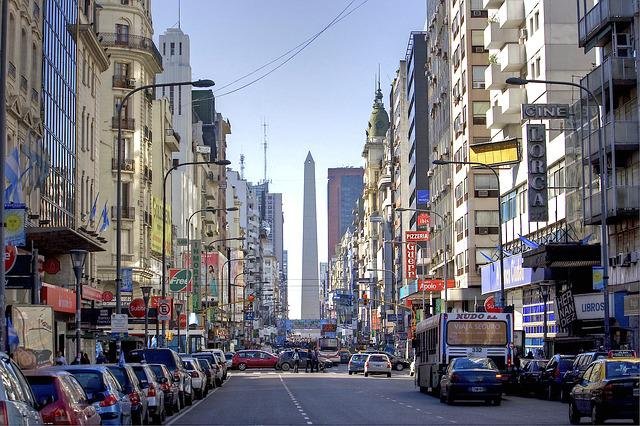Spain is one of the most visited countries in the world. In fact, the touristic sector generates approximately 12.3% of the local Gross Domestic Product (GPD), which clearly shows the importance of the industry in the Spanish economy.
Many reasons explain why Spain is a touristic success. First, Spain is a sunny place that gets much more sunlight than some of its European neighbors. So, it is no surprise that people from the United Kingdom, Germany, Switzerland, Belgium, or other countries that are near Spain, choose the country as a destination to get away from the cold, cloudy and rainy days they get at their homes.
But also Spain is packed with things to do and places to visit. The natural attractions, the beaches, the fantastic architecture of its vibrant metropolis, and the picturesque streets of small Spanish towns, combined with delicious cuisine and great nightlife, are among the reasons that attract many people from around the world.
Table of Contents
Digital nomads in Spain
Nowadays, many young adults decide to travel while they work. An internet-connected computer is enough for the digital nomads to accomplish their daily tasks. With remote working consolidating, a new lifestyle has emerged.
Many digital nomads have decided to settle in Spain for some time while they work. In most cases, aside from working, they want to make the most of their experience in Spain by bonding with locals and getting acquainted with their culture.
In effect, many visitors complement their stay with Spanish class Barcelona in order to
learn Spanish and get a better insight into the Spanish culture. Visitors can connect to many curious traditions while staying in Spain.
If you are considering visiting or relocating to Spain, in this article, you will find some of the most amazing local traditions you should know and will probably love.
Spanish customs that will win your heart
Grasping another culture can be pretty challenging. Even though understanding the language can help, it doesn’t mean that we completely comprehend what is going on in every context or situation.
Below we have created a list of Spanish customs and traditions that will help you better understand Spanish culture.

Napping
In some places of Spain, nap time is almost sacred, meaning you shouldn’t call a person on the phone or ring their door between 2 pm and 5 pm.
Even though in big cities, such as Madrid and Barcelona, it is less common to take a nap, the truth is that this custom is very much alive in small towns of Spain.
In those places, you won’t find any stores open after lunch, and the streets may look desolate since almost everyone is taking a nap.
Even though the siesta has Italian origins, it was adopted by Spaniards who traditionally worked from 9 AM to 2 PM and then took a two hours break to eat and rest before returning to work until 8 PM.
Another reason to explain the Spanish nap time is that they stay up late, so getting some rest is necessary.
If you go to Spain and stay in a small town, you will immediately notice that everything stops from 2 PM to 4 PM and probably get used to taking these naps to keep awake until supper.
Gastronomy
Spaniards love to cook, and their cuisine is one of the best in the world. When tasting the Spanish cuisine, you will be able to grasp how the diverse Spanish cultures that coexist in Spain contributed to creating the most amazing dishes.
Spanish cuisine combines ocean food with legumes, wines, cheese, and fruits to create exquisite homemade flavors.
When visiting Spain, you will also need to get used to mealtimes, which will probably vary from yours.
Spaniards usually have breakfast from 7:00 to 9:00 AM. It usually is a quick snack, most likely sweet, such as a croissant, that is devoured with a latte. Some Spaniards may even skip breakfast.
In mid-morning (from 10:30 to 12:00), it is common to have a mid-morning snack, such as tortilla de patatas.
Later, from 14:00 to 16:00, Spaniards have lunch, a substantial meal in Spain. Lunch usually starts with an appetizer, a main dish, and a dessert. This is why you will probably find restaurant closed until 13:30 or 14:00hs.
Another Spanish meal is the “merienda”, a late-afternoon snack similar to the breakfast snack. “Merienda” is like tea time, where you can eat pastries with an infusion such as coffee or tea.
Last is dinnertime. It usually starts at 20:30 and lasts until 22:30. Dinner is typically a light dish, such as tapas, and during weekends it can even begin later than 20:30.
Sports
Last, one of the most important traditions in Spain is related to sports, specifically football or fútbol.
When Barça confronts Real Madrid, the Spaniards refer to it as “El Clasico”. If you are staying in Barcelona and Madrid during the match, you will probably notice it because both cities and a significant part of the country are stopped.
In some cases, “El Clasico” produces mass demonstrations in both locations, with fans coping the streets carrying flags.
But football is not the only sport that motivates Spanish admiration. Tennis matches are also a success, especially when Rafael Nadal is playing, which creates a unique atmosphere within the country, with fans leaving their jobs to watch the match or meet with friends to share the spectacle.
To conclude, Spain is one of the world’s most amazing places to visit. From its metropolis to its small towns, many destinations are worse to see while learning Spanish, getting acquainted with their culture, and bonding with locals.





